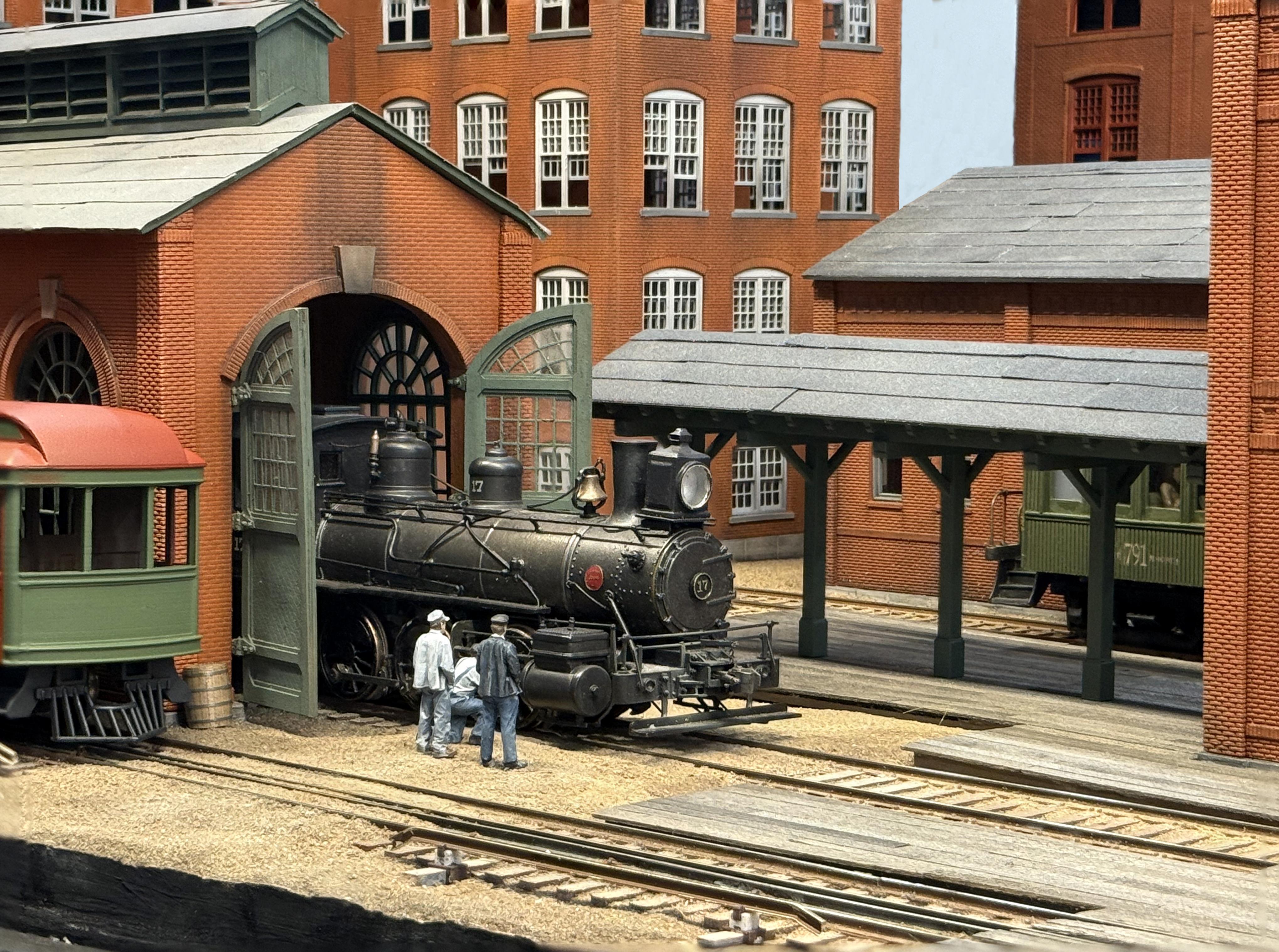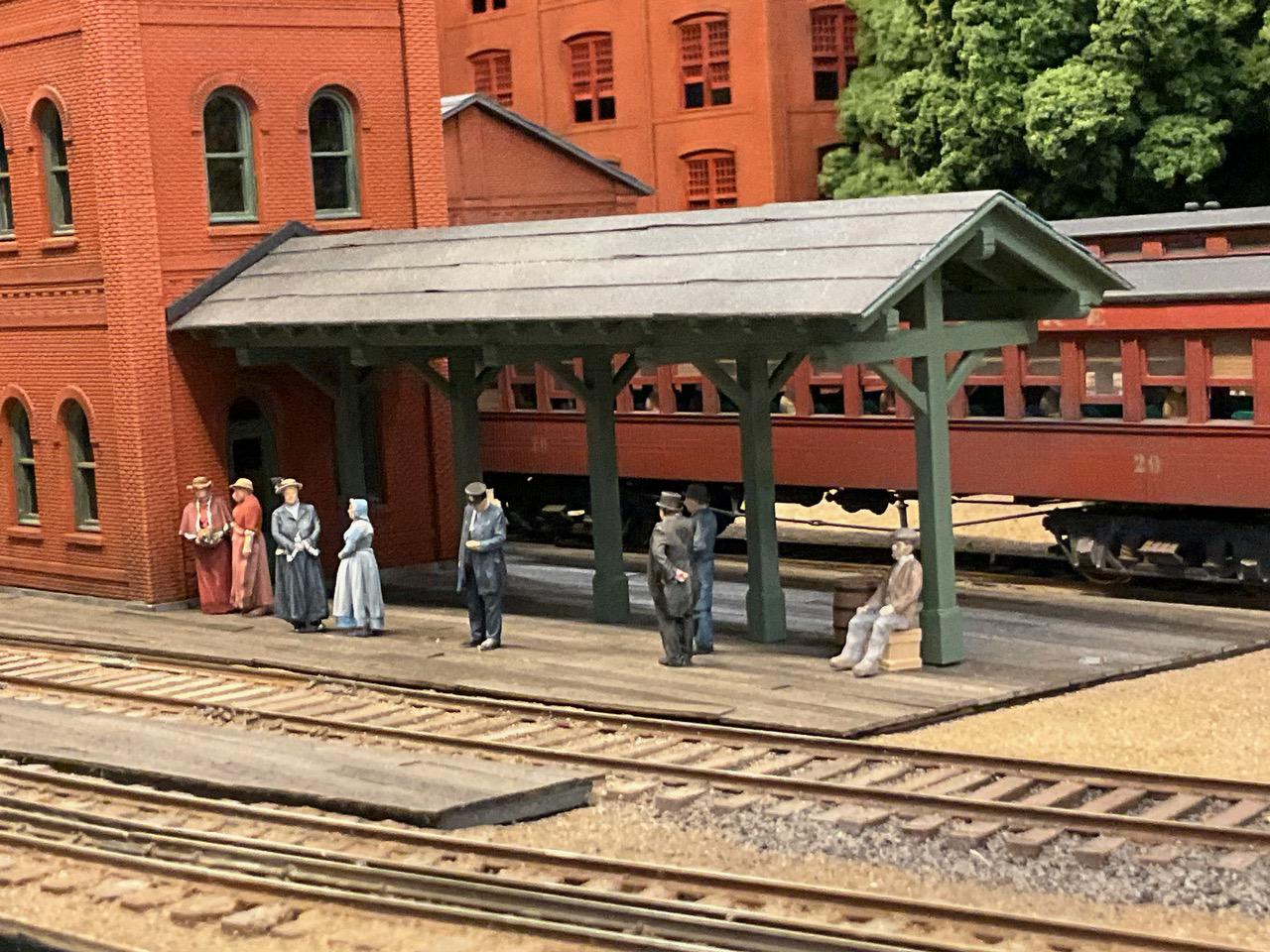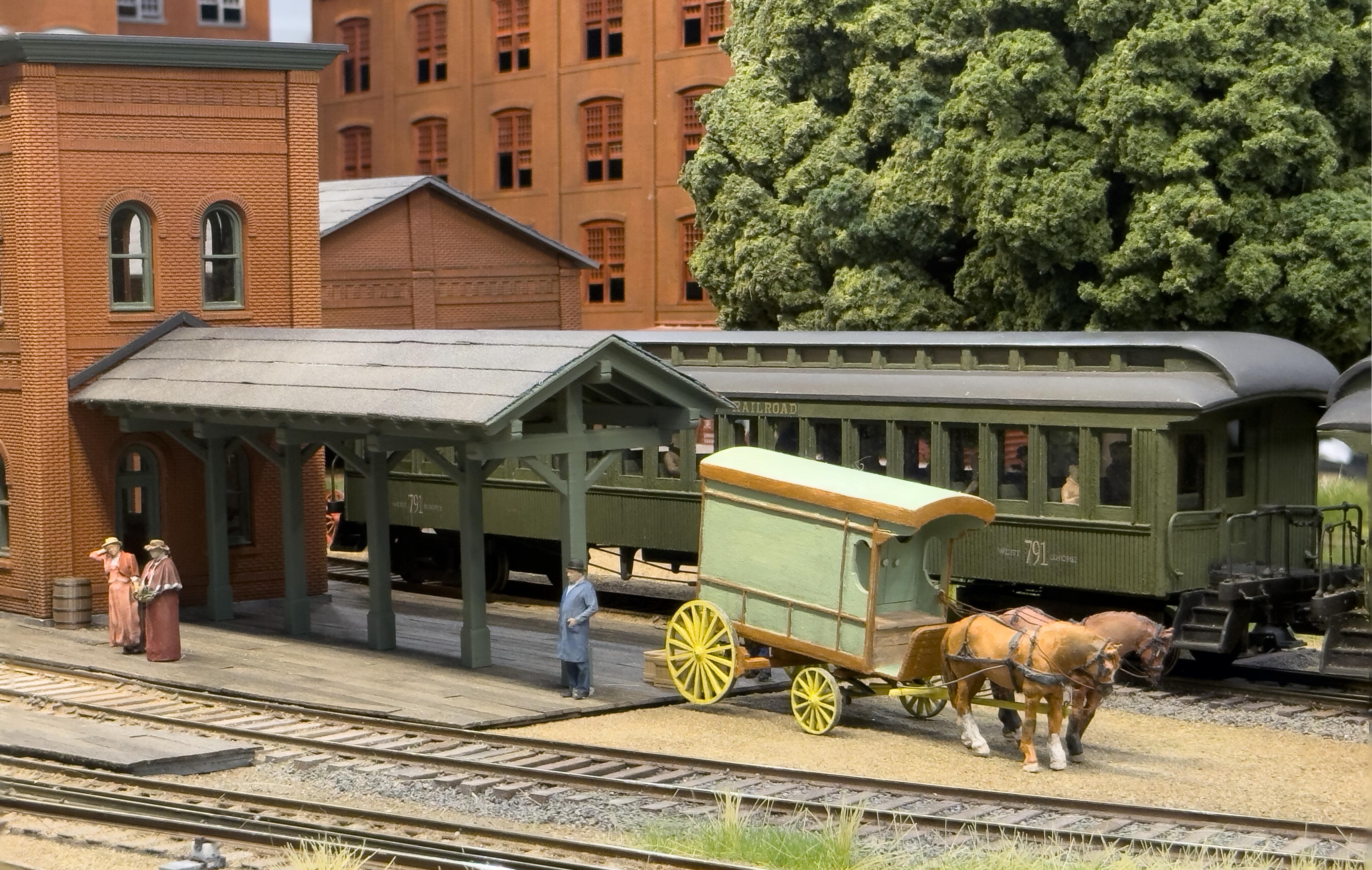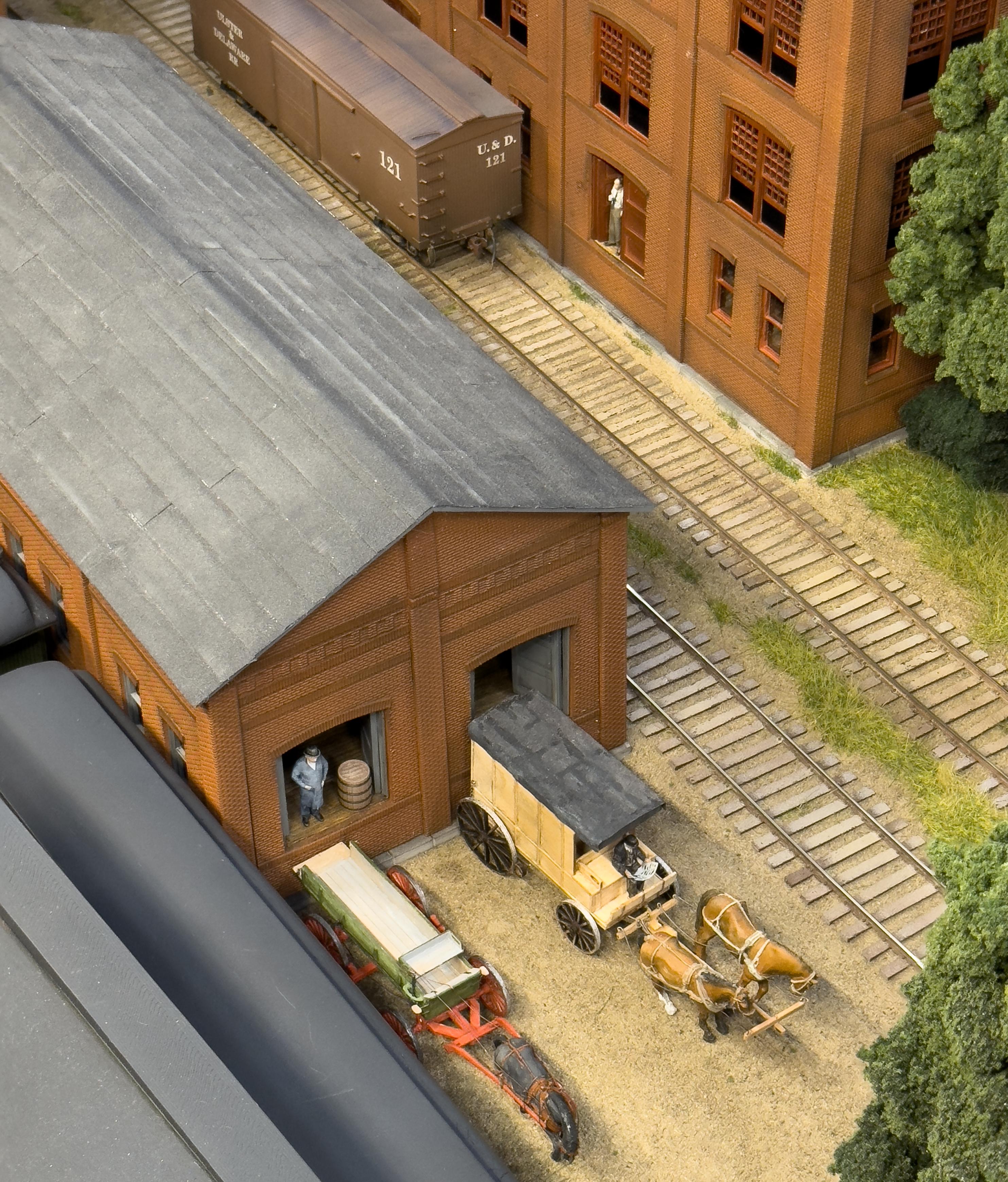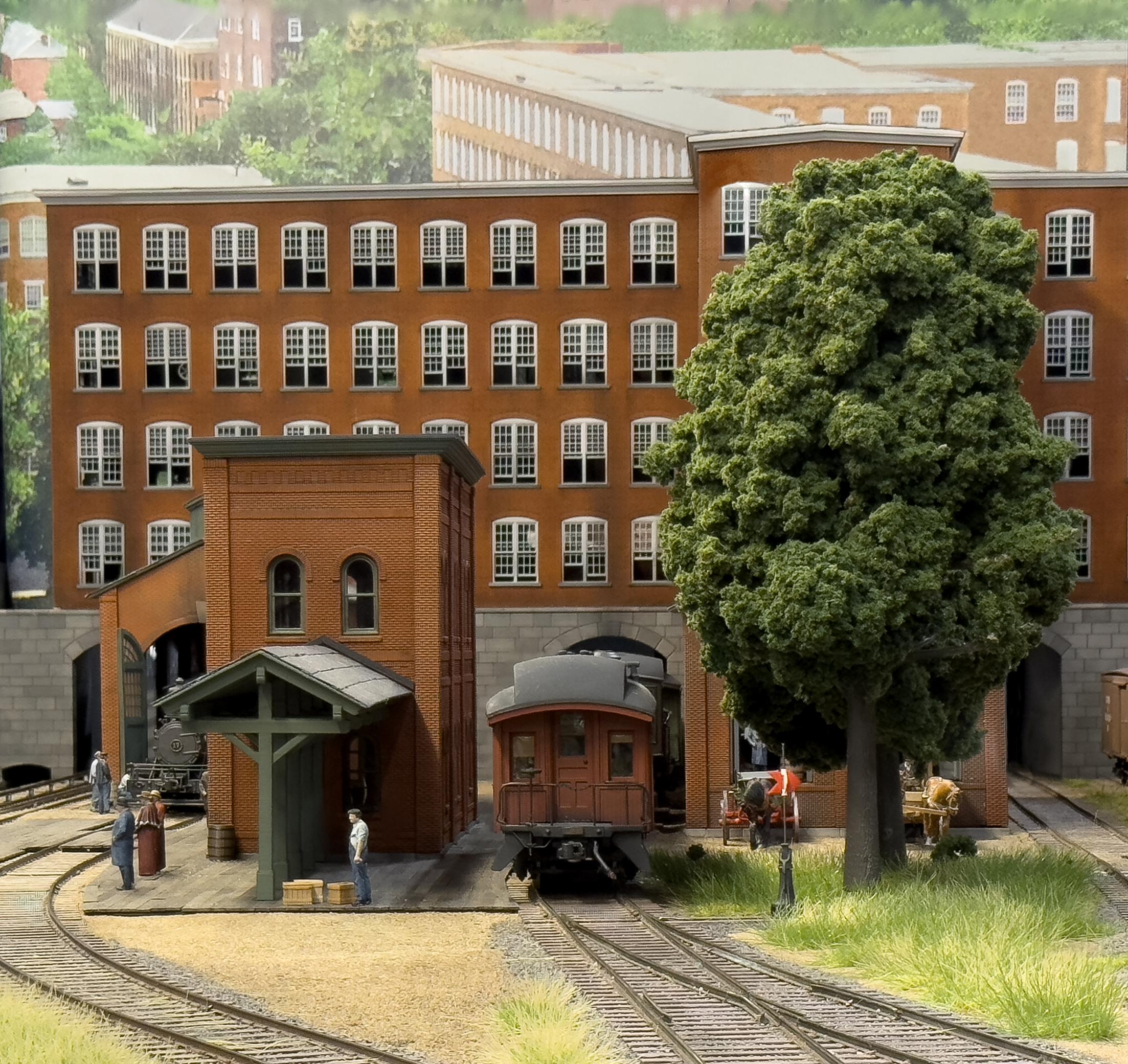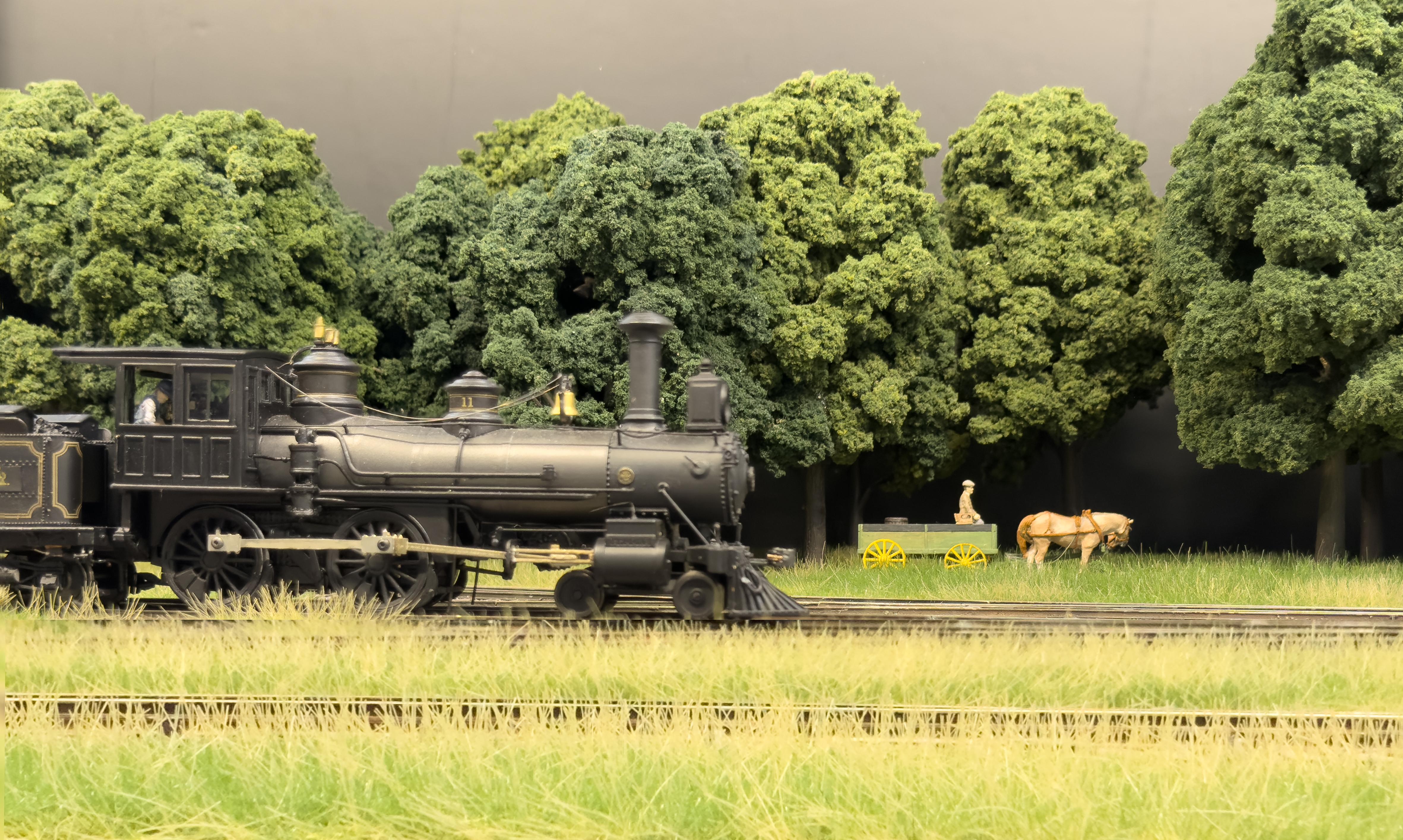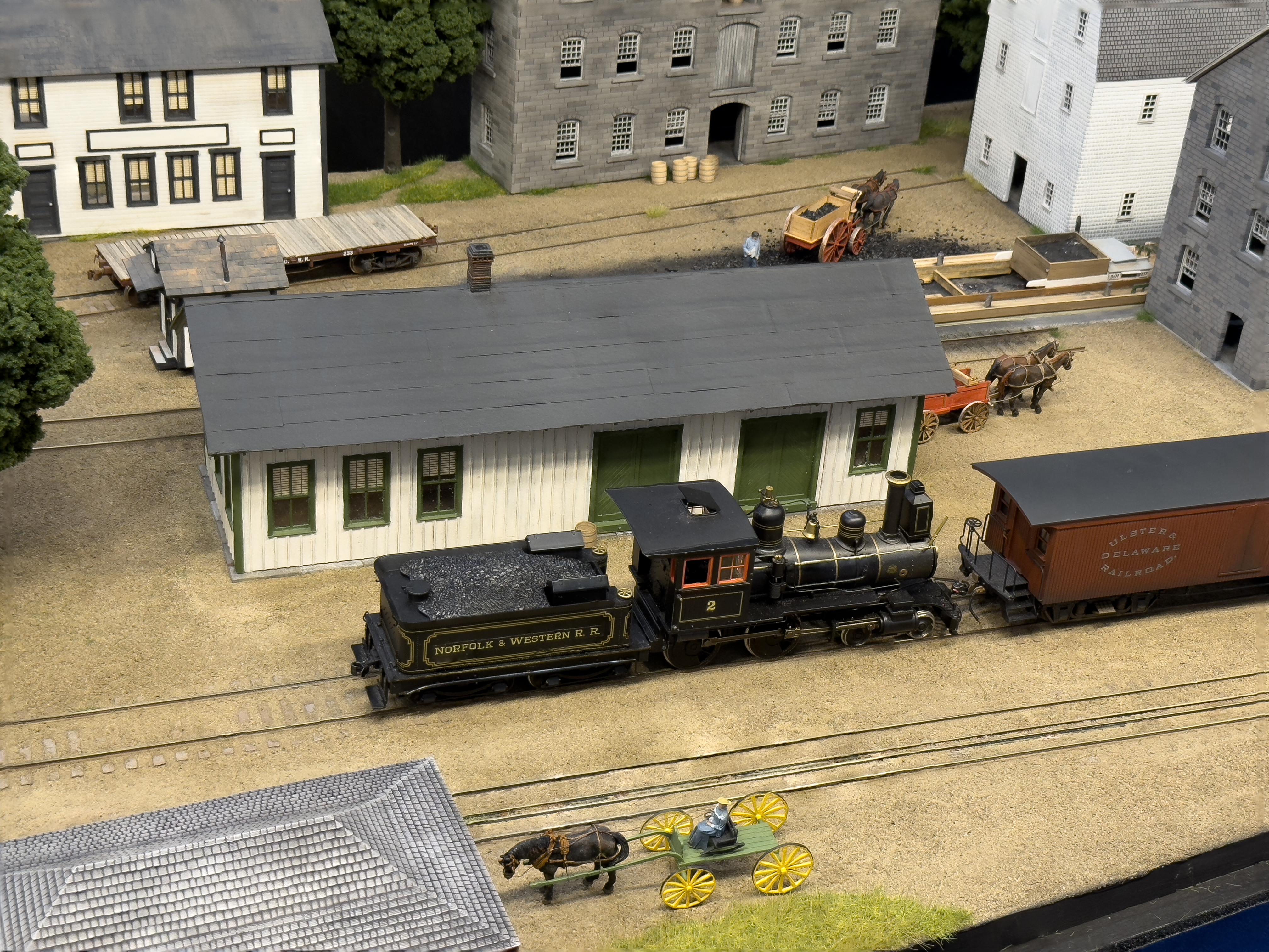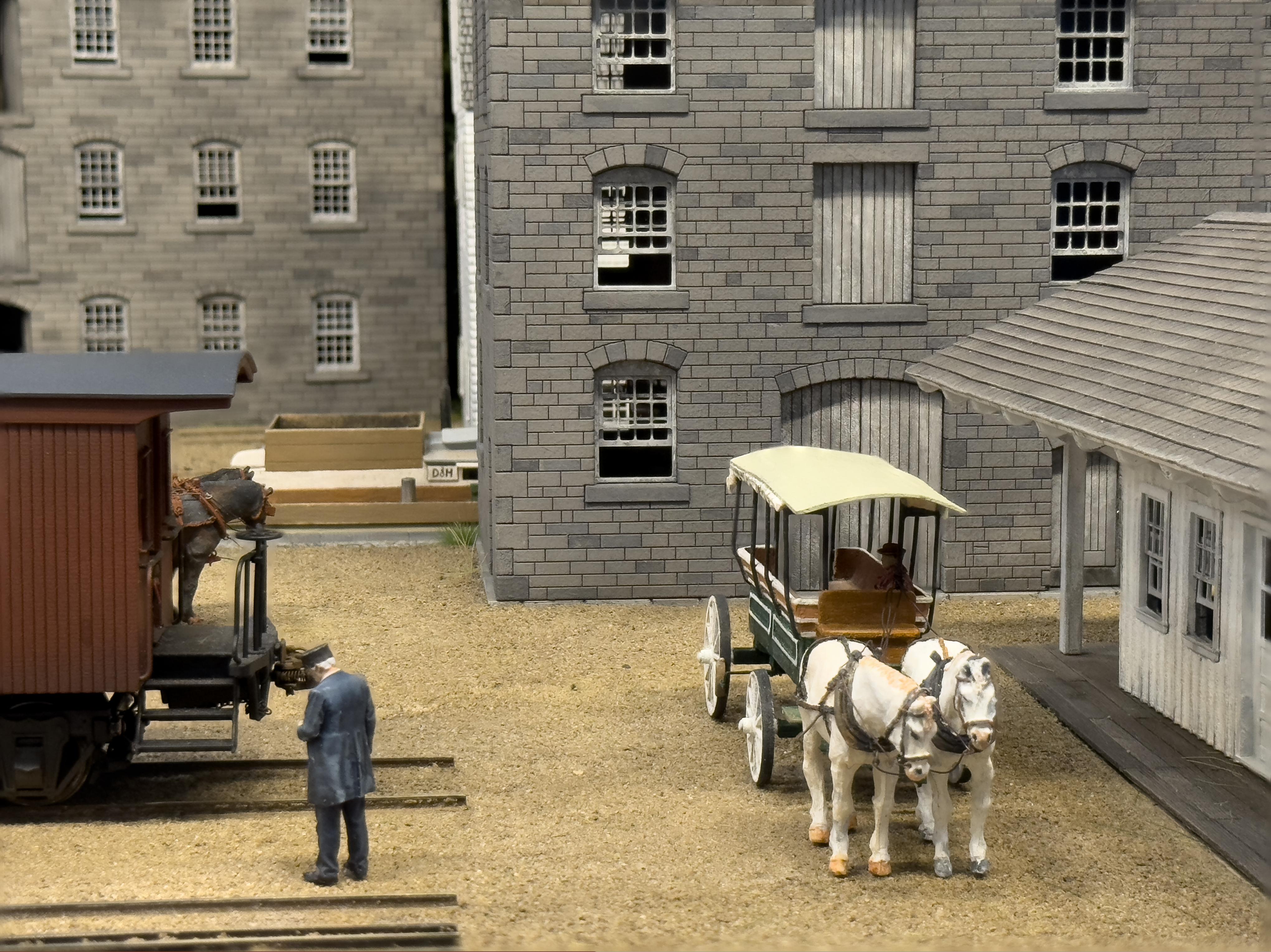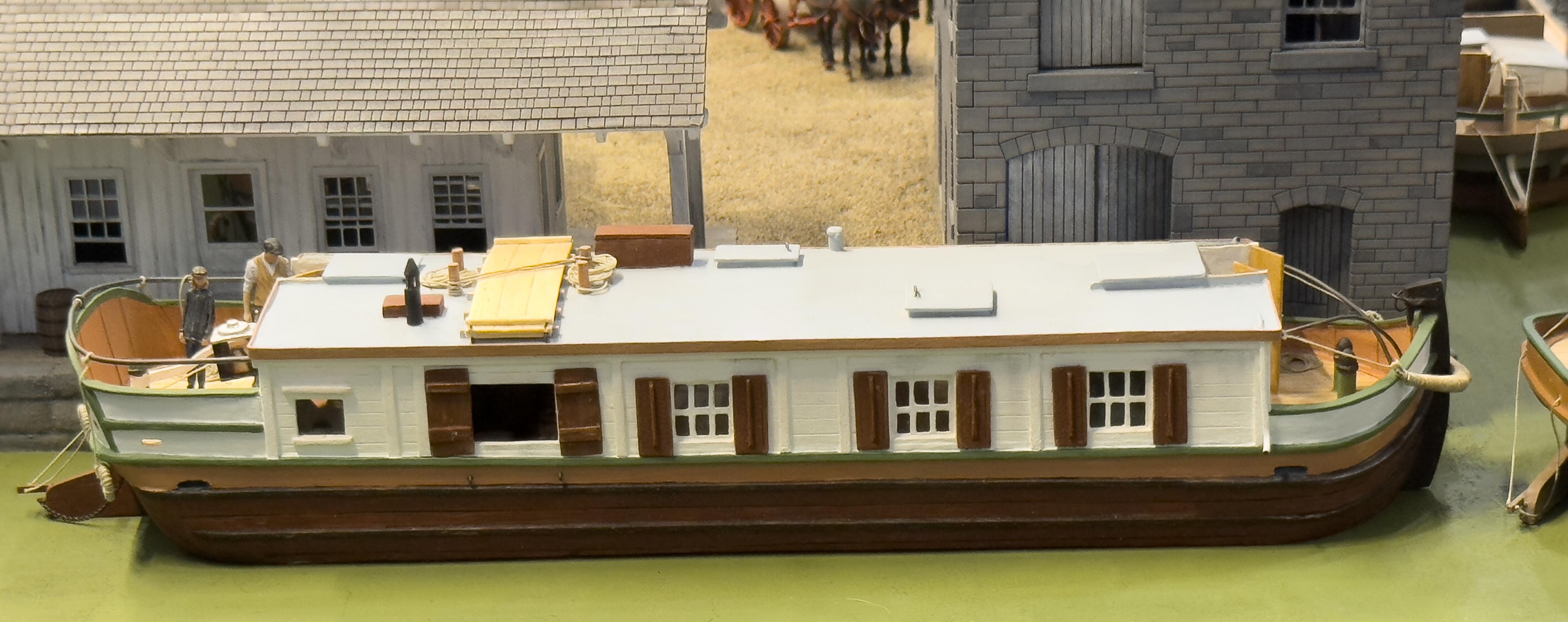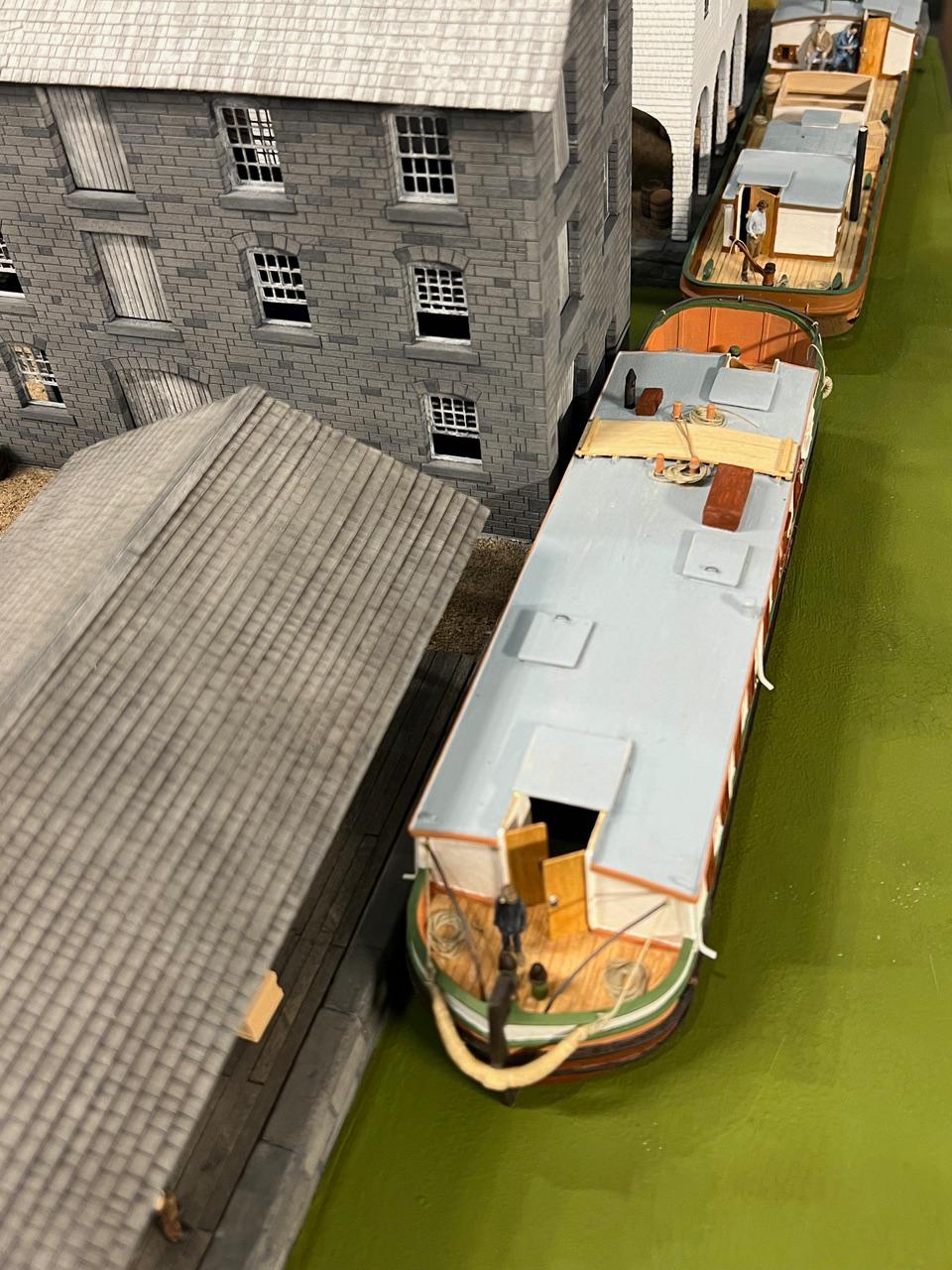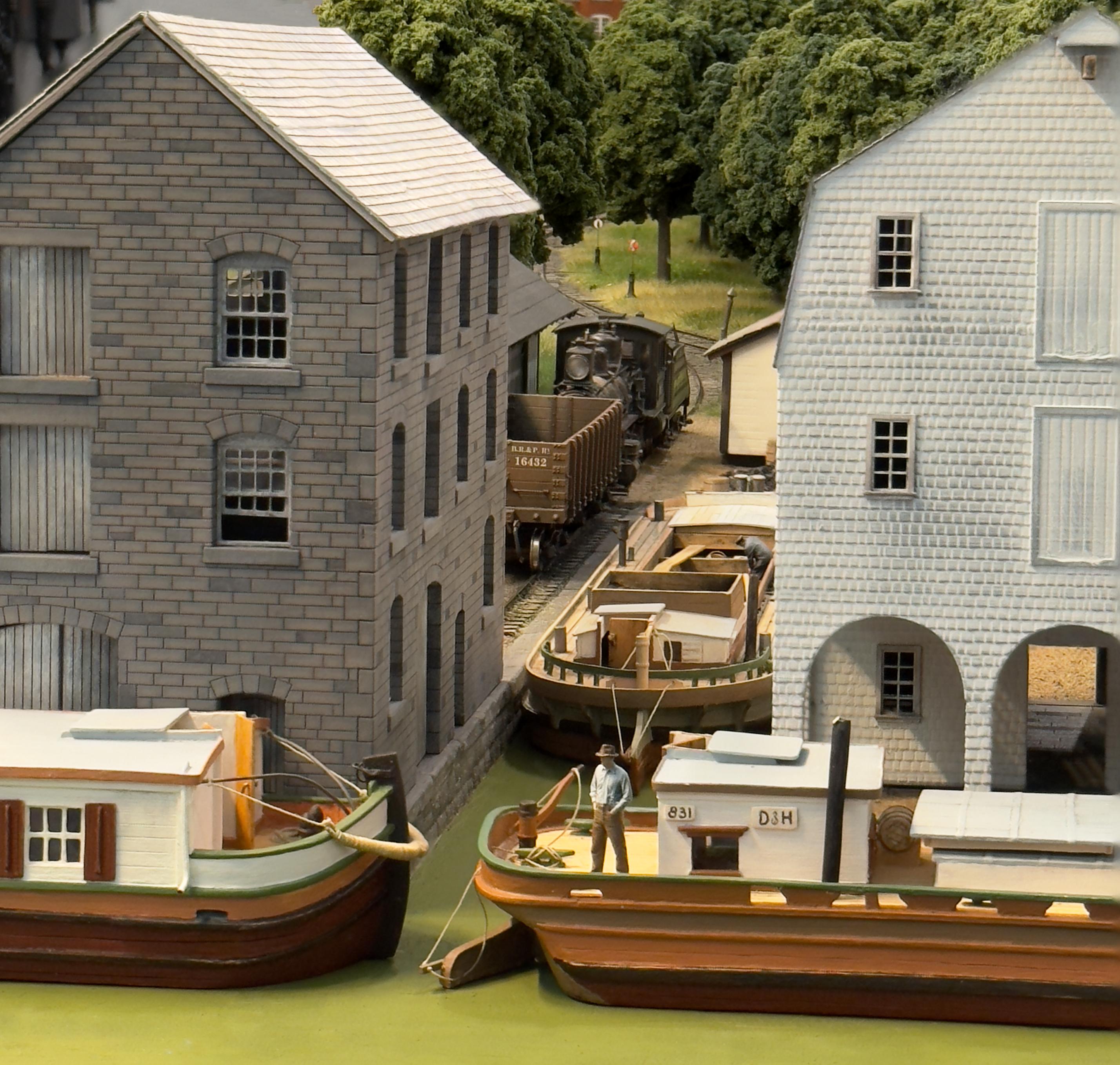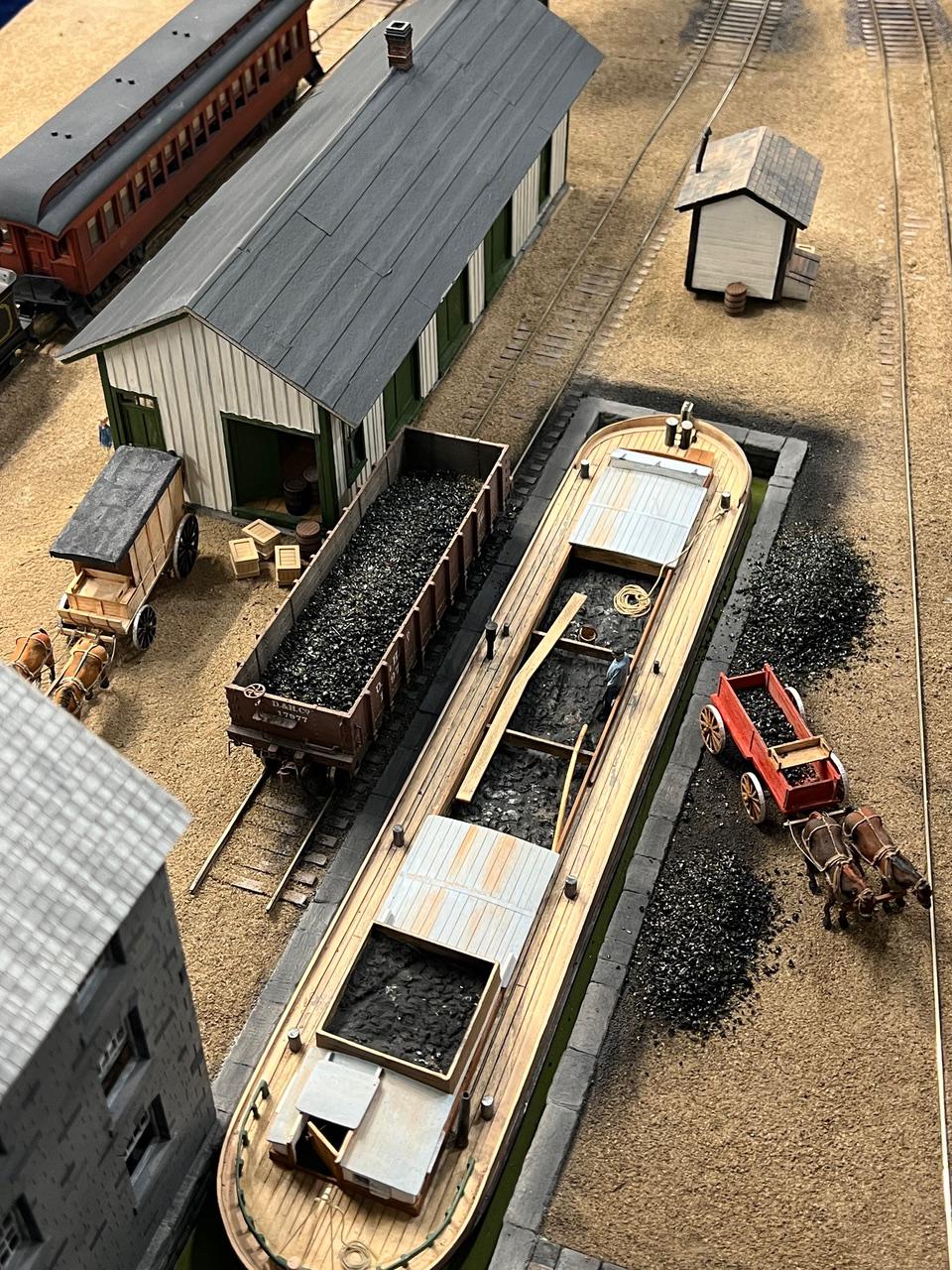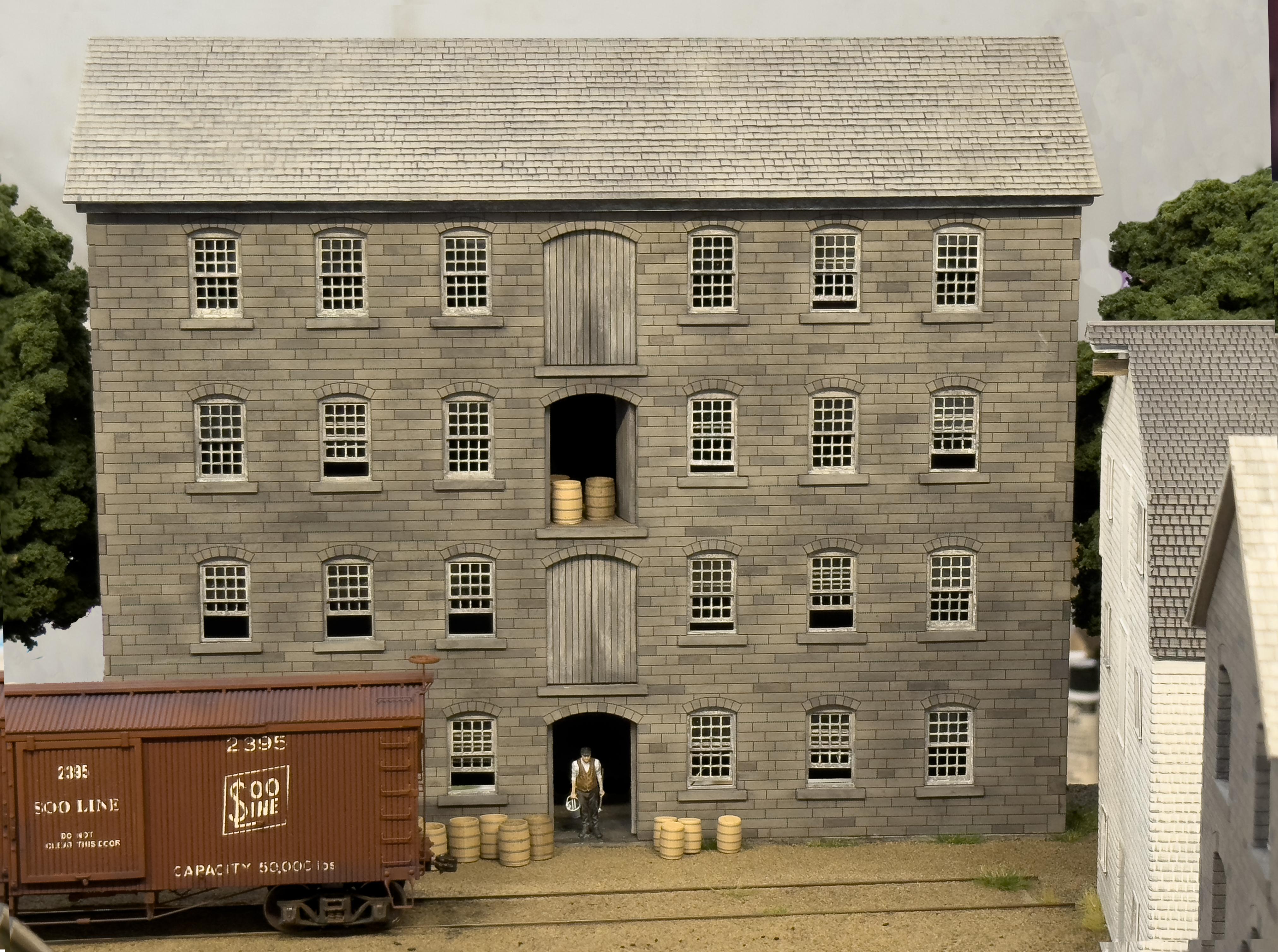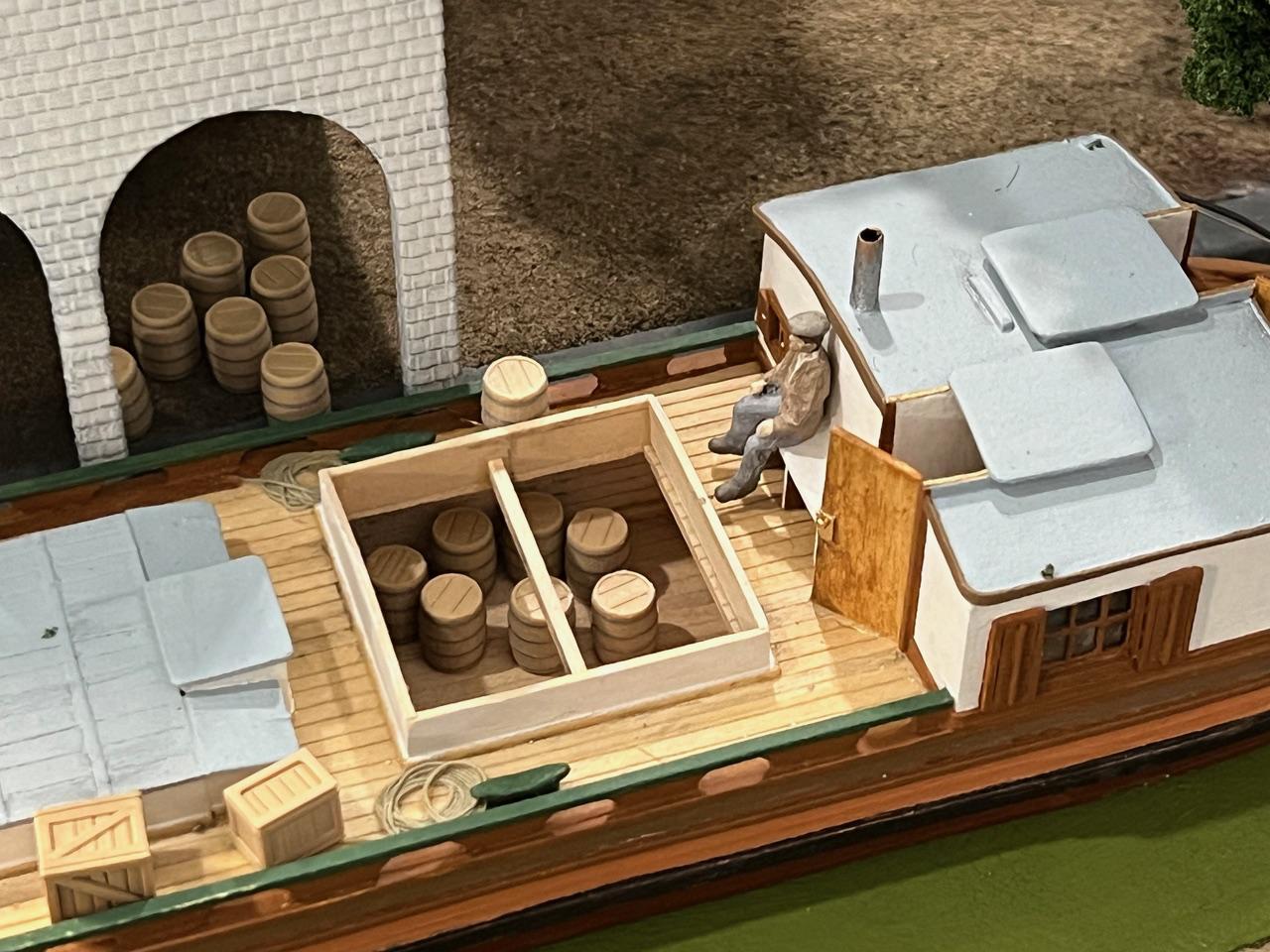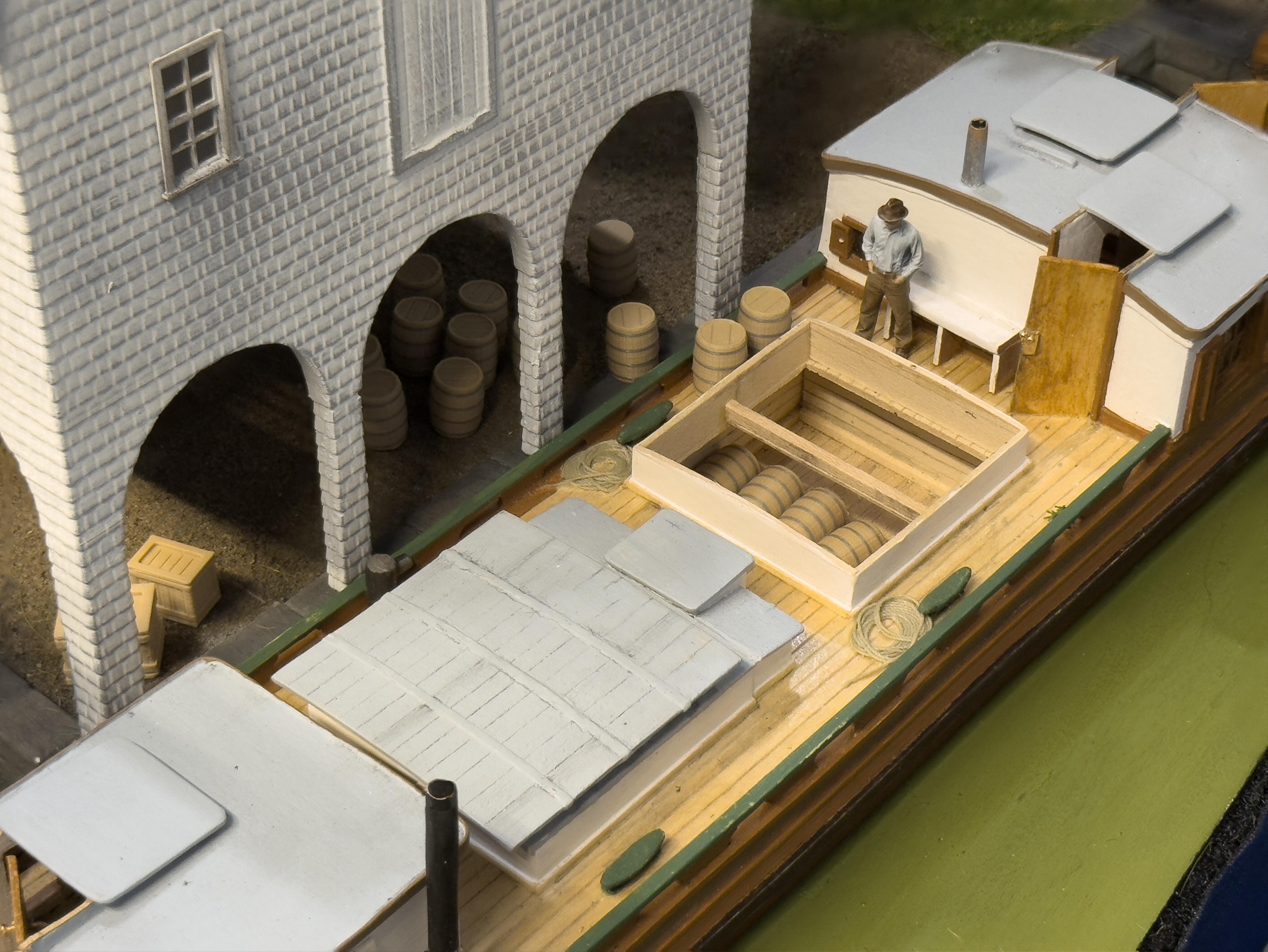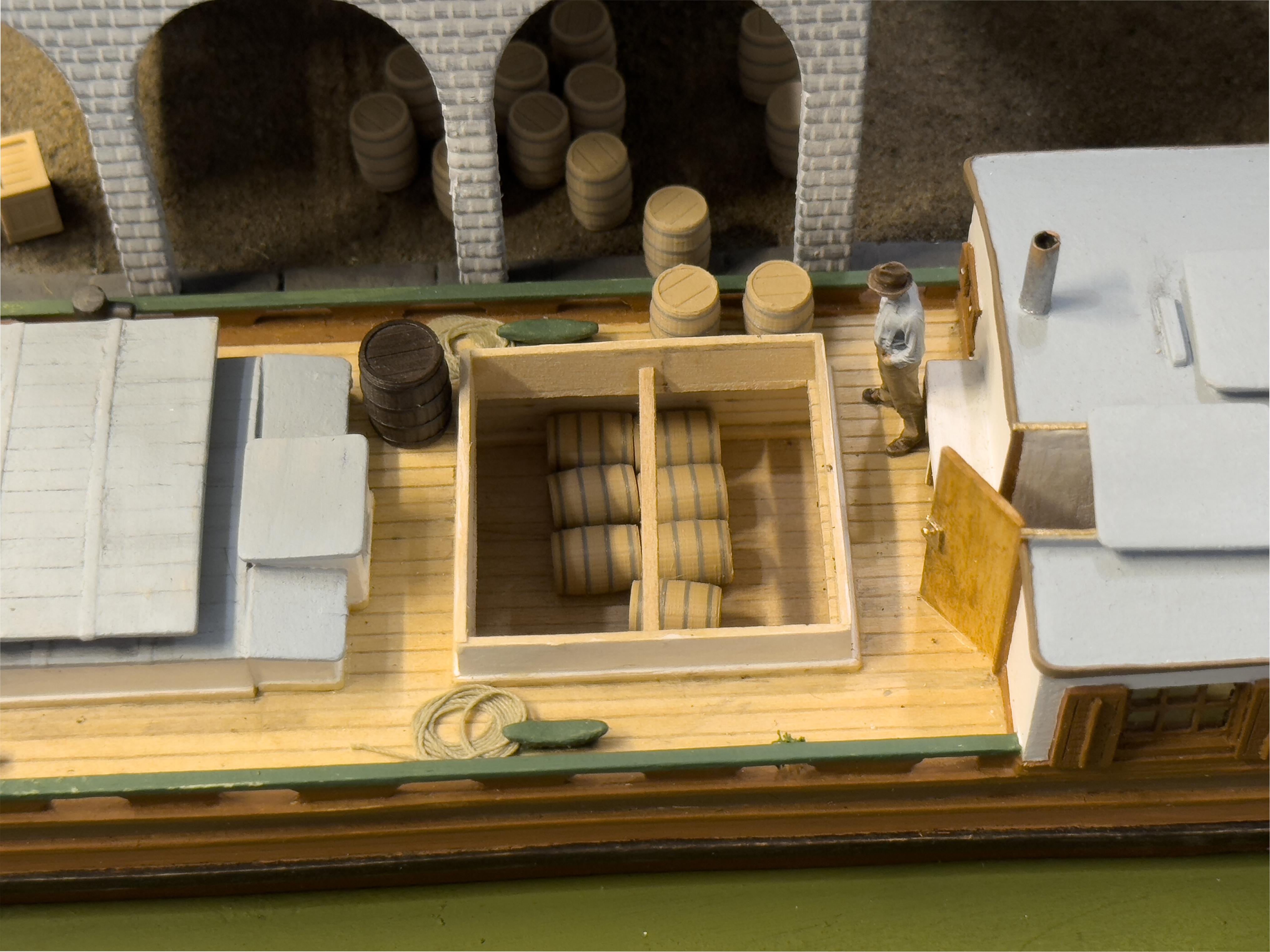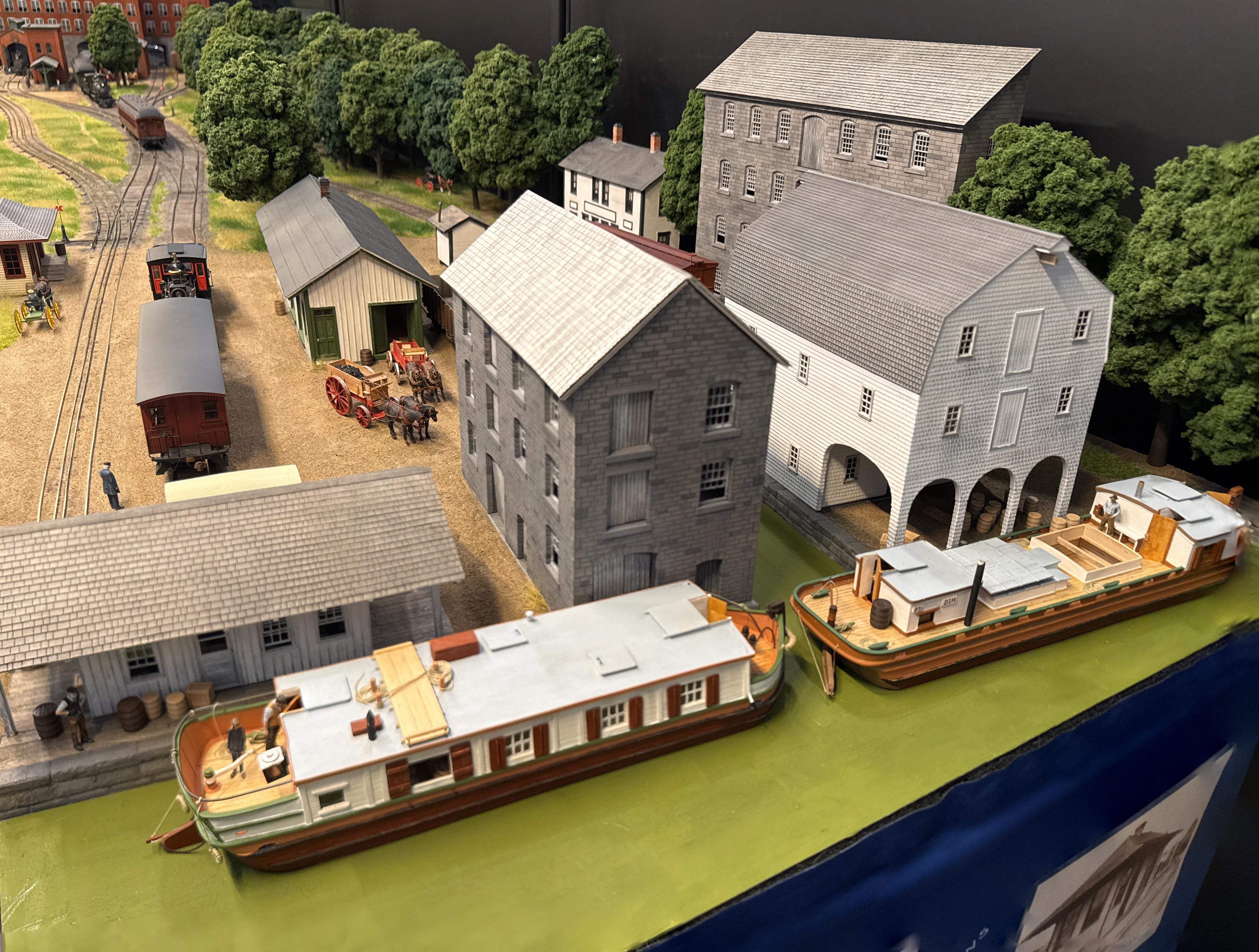We will take a tour of the entire layout, from left to right, as generally viewed by visitors. The tour starts at the left in Columbus, Ohio. It then passes through open land, conveying distance traveled by the railroad. The scene ends on the right at Lockbourne, Ohio, which features the interchange of railroads and canal boats.
Columbus, Ohio
Prominently featured against the photographic backdrop of Columbus, is the Columbus Buggy Company. Horse-and-carriage buggies were the main mode of land transport for individuals, and this company produced the buggies, many of which are featured on the layout. The building's brick walls were made out of laser-cut composition board with 3D-printed windows, and has 3D-printed machinery modeled in the interior. It sits up against the photo backdrop which hides the transfer area.
The Norfolk & Western Railroad's engine house sits in front of the Buggy Company, where the N&W crew are preparing an engine for a run to Lockbourne. The track in the foreground belongs to the Scioto Valley Traction Co., with its third rail clearly visible.
Next to the engine house is the Columbus passenger station, where several passengers have gathered ready to board the next train to Lockbourne. Note how all of them are wearing their "Sundays' best", as train travel was a luxury back then.
Behind the passenger station is the Columbus freighthouse.
As we leave Columbus, this is the view back to the city. The view of the freighthouse is blocked on the right by the large tree.
The Countryside
As we make our way to Lockbourne, we cover some open terrain.
Lockbourne, Ohio
We have arrived in Lockbourne. In the foreground on the left is the Scioto Valley Traction Co.'s passenger station. Its track is shown behind it. The tracks behind it are those of the Norfolk & Western.
The Lockbourne freighthouse is where all of the general merchandise is delivered and picked up. This photo also provides an aerial view of Lockbourne.
The Lockbourne passenger station is the end-of-the-line for the railroad. A station wagon is waiting to take passengers to their local destinations in Lockbourne.
Passenger travel does not end at Lockbourne. A dedicated passenger boat is moored in the canal ready to take passengers far and wide. The stern of the boat is visible in the photo above. The photo below shows the station on the left.
Coal is very important in this era. Next to the passenger station is the coal warf.
This photo shows the coal canal boat being loaded or unloaded at the coal slip. This view is taken from the other side of the layout, showing the Lockbourne freighthouse in the background. The canal is to the left.
Whiskey was a higher-value commodity, cheaper to ship to market than bulk grain, and benefitted from plentiful water supplies by being located beside the canals. This models the Monypenny Distillery in Lockbourne.
An aerial view of the Lockbourne area from the canal's side.


